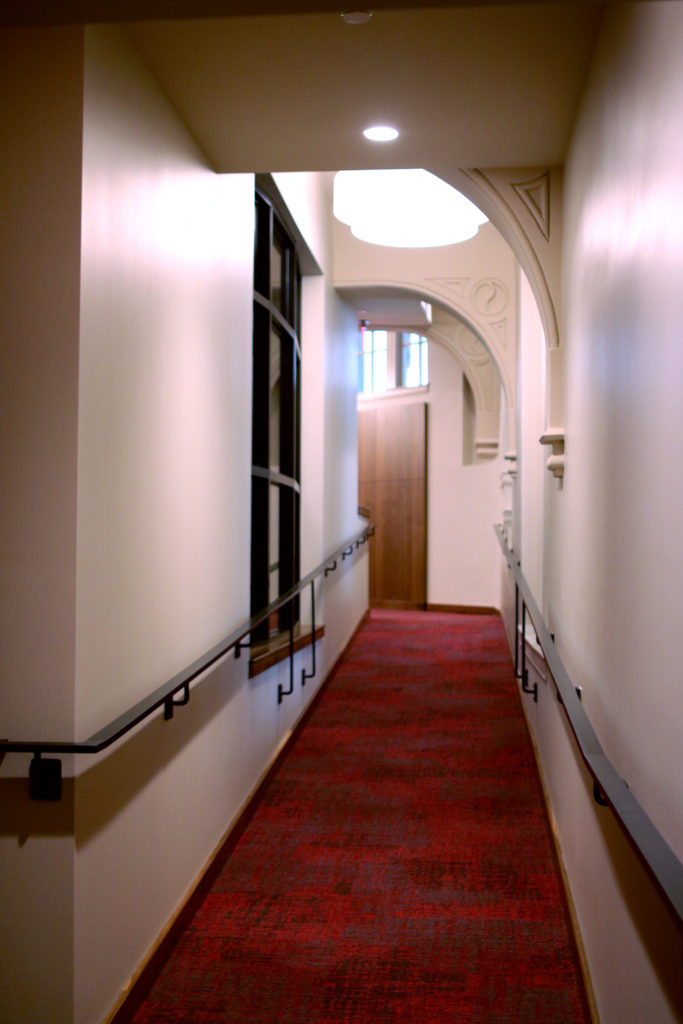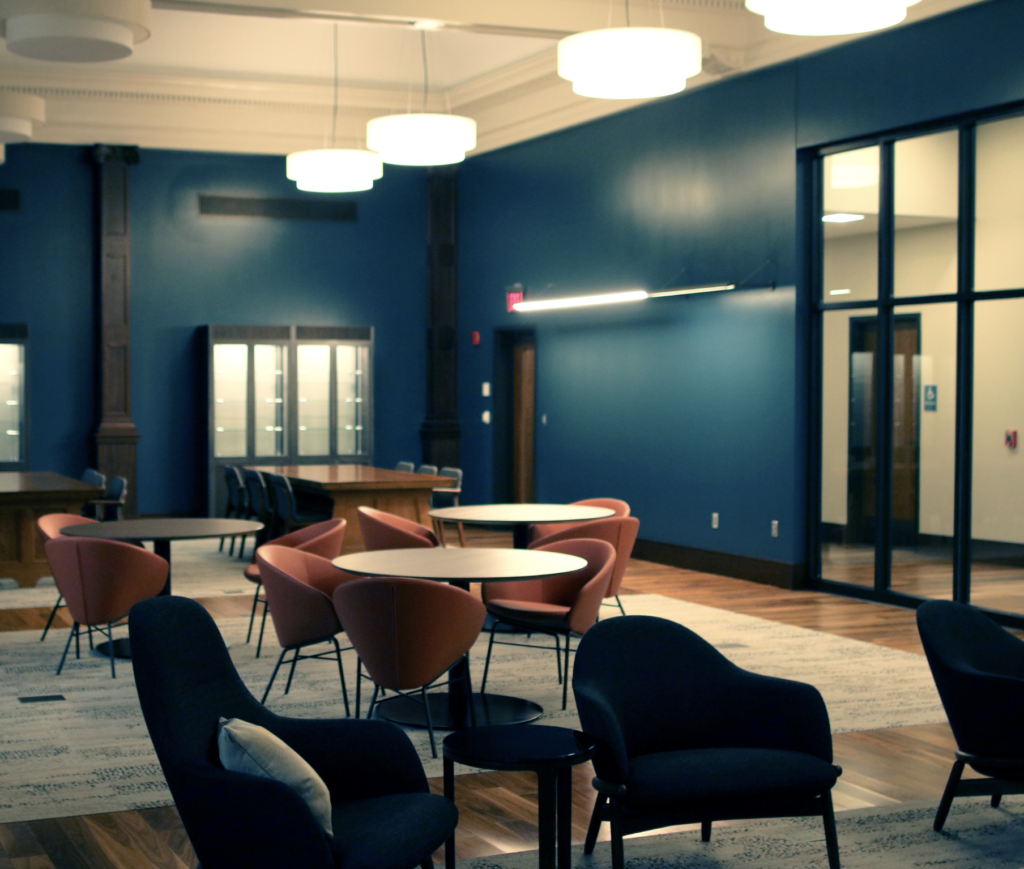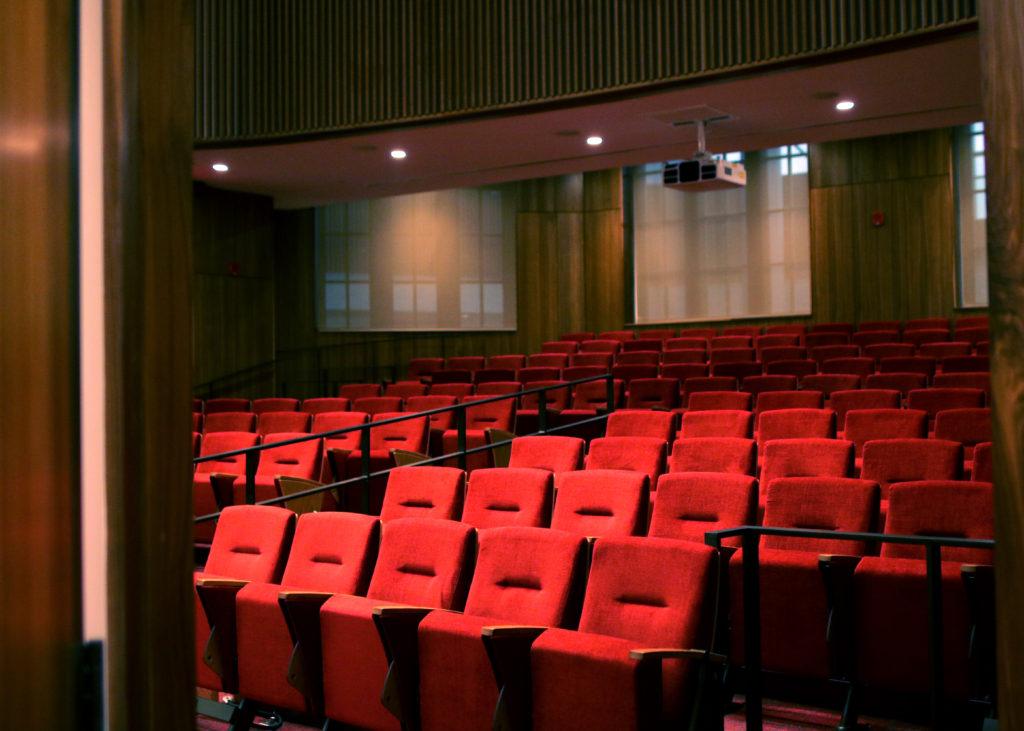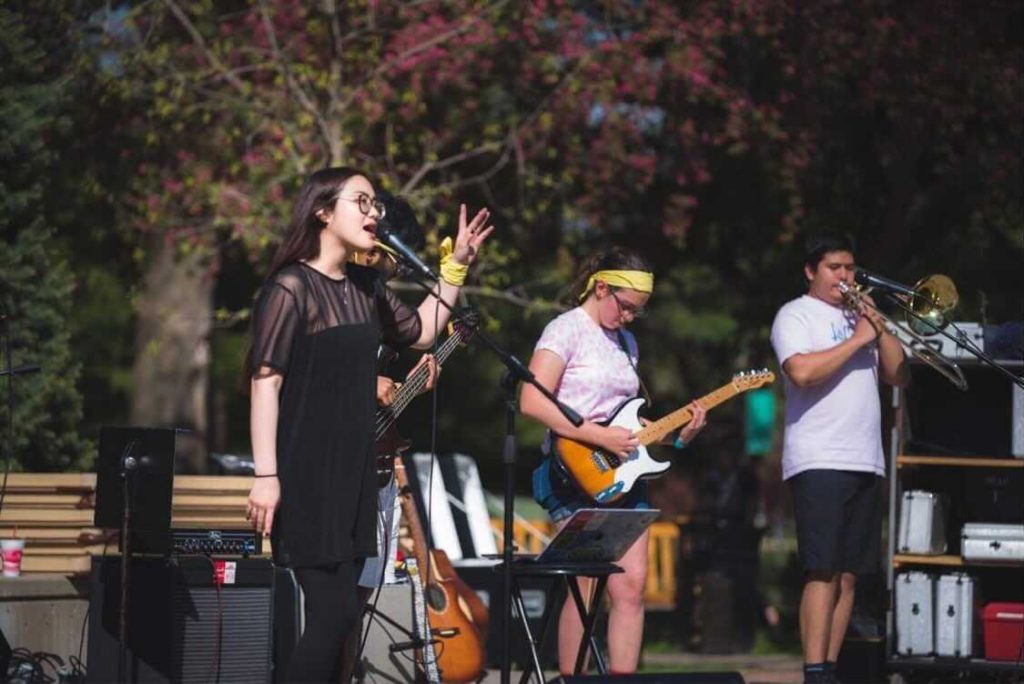The spaces are not yet open for students, but renovation on Carnegie Hall and the Alumni Recitation Hall (ARH) is complete. The renovation, part of the construction of the Humanities and Social Studies Center (HSSC) that began in 2017, added new features to the old buildings while also maintaining their unique historical features.
“[The architects] wanted to do even better homage to the architecture and the history of those buildings than what was done in the previous renovations, and I think they did a wonderful job doing that,” said Rick Whitney, assistant vice president for Facilities Management.

According to Erik Simpson, professor of English and co-chair of the HSSC Planning Committee, the Carnegie reading room originally had a plaster ceiling with crown molding, but previous renovations had covered it up.
“We found that the original ceiling was underneath the 20th century dropped ceiling, and no one knew that,” said Simpson. “It’s so cool to have these traditional spaces going back to something like the life they were designed to have, as well as getting modernized and coming in line with all of the new parts of the HSSC.”
Plaster junkies in the student body shouldn’t get too excited, however; the old reading room is going to be a faculty and staff lounge. “Most campuses have a designated place for faculty and staff to gather, and we don’t right now,” Simpson said.
Another architectural feature the new renovations have restored is the auditorium in the ARH. “The auditorium was the signature architectural face of the original ARH, and it got chopped up over the years. It got reduced to one story from two, and some of it was cut up into offices, and it’s really going to go back to what it was supposed to be,” Simpson said.
The ARH auditorium will be a space for lectures, readings, film showings and more. These kinds of events were generally held in JRC 101 last year, but the JRC spaces are better designed for flexibility, the kinds of discussions that require moving the furniture around, whereas the ARH auditorium has traditional forward-facing rows of seats.

Those seats, in fact, caused one of the few serious delays in construction due to COVID-19. “The auditorium seats are fixed seats that are high end, really nice, from Italy,” Whitney said. “The shutdowns in manufacturing in Italy and just the difficulties in shipping during the pandemic delayed that piece substantially from the rest of the project, so we were waiting a good several months before they arrived after everything else was completed.”
Although not much was left to do at the point that Grinnell’s campus shut down in March 2020, construction continued, and according to Whitney, it was easier without having to worry about students, faculty and staff being in the building and disrupting class with construction noise.
The HSSC also did not escape the August 2020 derecho unscathed. “On the roof there was some equipment that had some metal cladding around it, and that metal cladding got airborne and actually caused a little damage on the roof,” Whitney said. Luckily, the damage was minimal.
One way in which the renovation deviated from pure restoration was in improving accessibility. The College hired the Institute for Human Centered Design to offer feedback on the plans throughout the process, and Whitney emphasized that the HSSC goes beyond ADA compliance and reaches for universal design. “The building has four elevators because we didn’t want to have any situation where somebody in a wheelchair might have to go further than somebody that’s taking the stairs,” Whitney said. There’s one elevator in the ARH, one in Carnegie and one in each of the two pavilions of the addition.

Sound and acoustics are another area the renovation improves on the original buildings, especially the ARH. “We had hard plaster walls, hard terrazzo floors and hard plaster ceilings, so it was very echoey and loud,” Whitney said. “They used a very special kind of plaster material that’s acoustically absorbing, so now it’s not nearly as lively as far as audio and you can actually have a nice conversation.”
Another way the HSSC goes above and beyond is in environmental friendliness. “Right now, it’s modeled to use around one-third of the energy of a brand-new building that just meets energy code,” Whitney said. “One-third! You know, that’s incredible and I think we should be proud of it in many respects.”
[The architects] wanted to do even better homage to the architecture and the history of those buildings than what was done in the previous renovations, and I think they did a wonderful job doing that. -Rick Whitney
Geothermal power, water capture and conservation, a green roof and chilled beam heating and cooling all improve the HSSC’s energy performance. “You don’t hear air noise in the classrooms, and that’s because of that chilled beam technology,” Whitney said. “It basically moves the heating and cooling energy around in piping rather than air, so you use smaller ductwork.”
Students can expect to explore ARH and Carnegie in Fall 2021. “They’ve been completed for some time now and are in pristine condition, but they need to feel lived in and they don’t have any activity right now,” Whitney said. “So, I’m really looking forward to the fall semester when there’s activity again.

























































